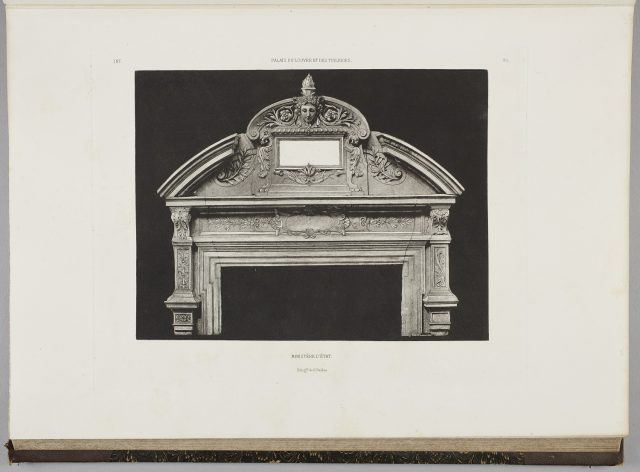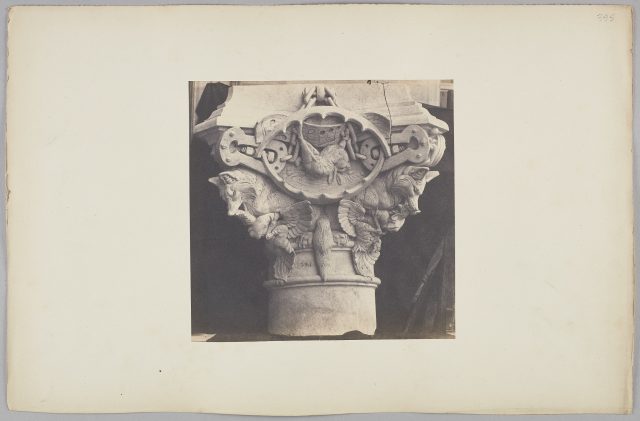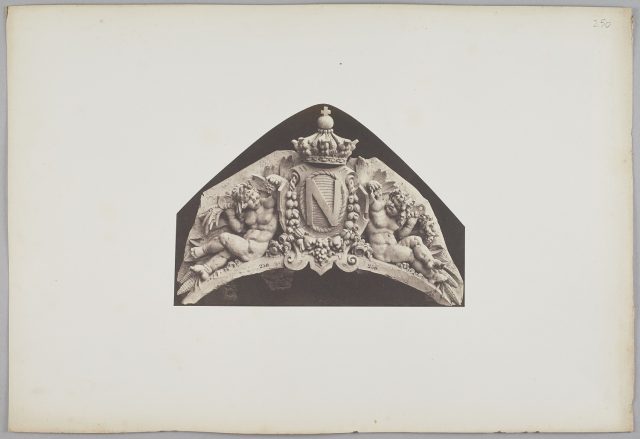Zoom in on the Louvre

Édouard Baldus, Fragments du Louvre, Element No. 395, Folio V, 1855-57, salted paper print, 20 × 21 cm (image), 31 × 47 cm (mount). Collection of Robert Hill, Toronto. Image © Art Gallery of Ontario.
The Louvre Museum contains some of the most well-known works of art in world history – raise your hand if you’ve waited in line to see the Mona Lisa or King Louis XV’s crown. It is among the largest art museums in the world, holding about 380,000 objects, but there’s also plenty of artwork to take in on the building’s own façade.
Renowned architectural photographer, Édouard Baldus, was commissioned by the French government to capture images of the remodeling of the Louvre that took place between 1855 and 1857, the centerpiece of the massive facelift on Paris’s buildings under Napoléon III. Many of these photographs are now on display in an installation from the AGO Collection entitled Édouard Baldus: The Louvre Folios, 1855–1857. Baldus’s photographs served as aids to architects, models for newspaper illustrators and as snapshots to keep the public interested in the work.
The AGO’s installation is co-curated by Kate Addleman-Frankel and the AGO’s Curator of Photography, Sophie Hackett. We asked Kate to pick the images that best display that period of the Louvre’s architectural style, and how Baldus’s photography captured its transformation.
Édouard Baldus, Plate 30: Ministère d’État, Volume I: Palais du Louvre et des Tuileries – Motifs de Décorations, 1869–1871, photogravure, 44 × 33 × 5 cm (volume). Collection of Robert Hill, Toronto. Image © 2017 Art Gallery of Ontario.
Decades after making the Louvre photographs, Baldus transformed hundreds of them into photogravures and published them in three volumes. He often made significant alterations to his images in transforming them from one medium to another, with the intention of presenting his subjects as timeless works of art rather than building fragments on a construction site.
Column capitals were intricately carved, many with animals and objects of symbolic significance. With its foxes, dead hare and the jaws of a trap, this capital represents hunting.
Napoléon III's initial and emblems, like the crowned "N" in this arrangement (likely a tympanum), appear throughout the new and renovated buildings, forming an important decorative motif and marking his role in the Louvre's completion.
Folio VI is composed entirely of putti (artistic representations of nude children, usually male) representing different disciplines, activities and seasons. This putto stands for winemaking.
You can see these gems from the AGO Collection until February 4, 2018. The installation is included in general admission, and AGO Members see it free!
Are you an AGOinsider yet? If not, sign up to have stories like these delivered straight to your inbox every week.





